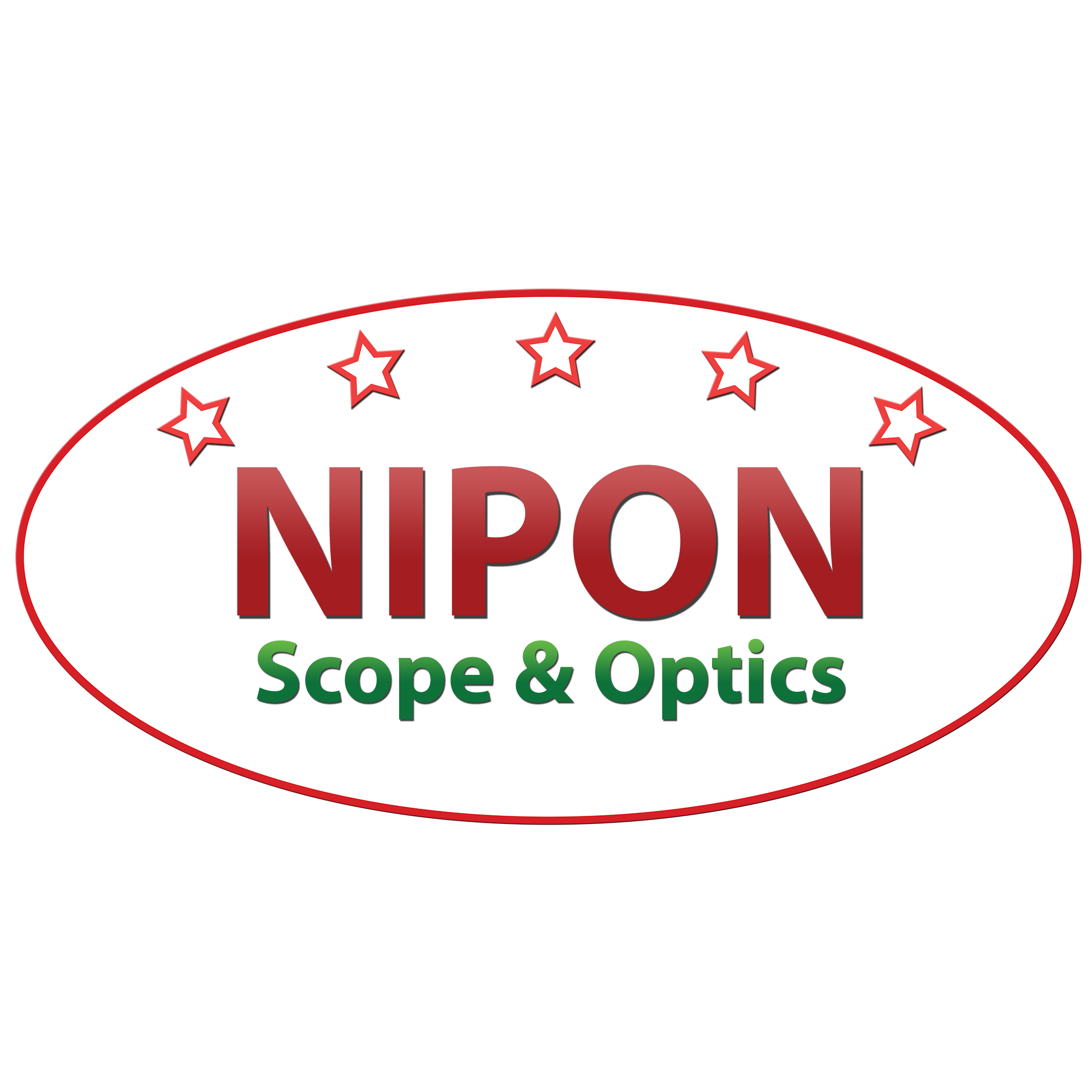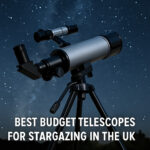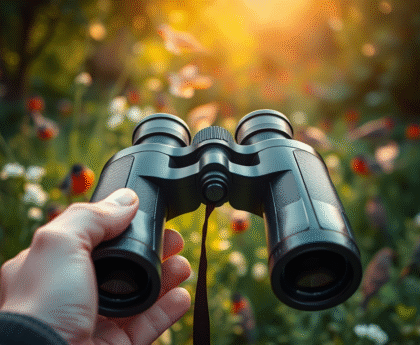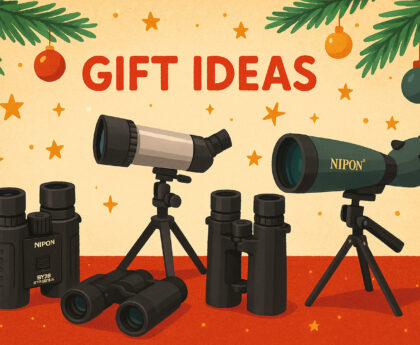When you want to see the world in sharper detail — whether that’s spotting birds across a lake, observing wildlife on the coast, or gazing at the moon — two popular tools come to mind: binoculars and spotting scopes.
Both bring distant subjects closer, but they serve slightly different purposes. This guide from Nipon Scope UK explains how each works, their advantages, and which one best fits your needs.
1️⃣ What’s the Difference Between a Spotting Scope and Binoculars?
Binoculars – Two Eyes, Wide Perspective
Binoculars have two optical barrels, one for each eye, giving a natural, three-dimensional view. They’re compact, quick to focus, and ideal for scanning large areas like forests, fields, or coastlines.
Typical magnification ranges from 8× to 12×, with objective lenses between 32–50 mm. This balance provides a wide field of view and good image brightness, even when handheld.
Spotting Scopes – One Lens, Extra Magnification
A spotting scope is essentially a mini-telescope designed for daytime use. It uses a single barrel and higher magnification, often 12× to 60×, or even above 100x, mounted on a tripod for stability.
Spotting scopes excel at long-distance viewing — perfect for identifying small details that binoculars might miss, such as plumage markings or mountain ridgelines.
2️⃣ Key Differences at a Glance
| Feature | Binoculars | Spotting Scope |
|---|---|---|
| Optical View | Two-eyed, 3D view | Single-eyed, telescope view |
| Magnification | 8×–12× (handheld) | 12×–125× (tripod needed) |
| Field of View | Wide | Narrow but detailed |
| Portability | Lightweight, easy to carry | Heavier, needs tripod |
| Best For | Birdwatching, travel, quick scanning | Long-range observation, target ID, digiscoping |
| Comfort | Less eye strain for extended viewing | Requires one-eye focus, less suited for fast scanning |
3️⃣ When to Choose Binoculars
Choose binoculars if you want:
- 🐦 Quick and versatile birdwatching: Great for following fast-moving birds and spotting multiple targets.
- 🌳 Hiking or travel convenience: Compact, lightweight, and easy to hang around your neck.
- 👀 Two-eye comfort: Natural viewing with less strain during extended use.
- 💷 Affordability: Quality binoculars are usually less expensive than spotting scopes with similar optical quality.
Recommended models from Nipon Scope:
4️⃣ When to Choose a Spotting Scope
Choose a spotting scope if you need:
- 🔭 High magnification for long-range viewing: Identify details at 100–300 m or more.
- 📷 Digiscoping potential: Many scopes allow you to attach a smartphone or camera for photography.
- 🌅 Observation comfort from a fixed spot: Perfect for hides, reserves, or balcony setups.
- 💎 Precision optics: Excellent image quality at high zoom levels.
Recommended models from Nipon Scope:
- Nipon 12-36×50 Compact Spotting Scope
- Nipon 20–60×80 Spotting Scope – Waterproof with Tripod
- Nipon 25–125×92 Long-Range Spotting Scope – Most Powerful and Waterproof
5️⃣ Which Is Right for You?
| Your Need | Best Choice |
|---|---|
| Beginner birdwatching | Binoculars (8×35, 8×42 or 10×42) |
| Long-distance identification | Spotting Scope (20–60×60 or 25-125×92) |
| Portability for travel | Compact binoculars |
| Photography through optics | Spotting Scope with adapter |
| Budget and simplicity | Binoculars |
| Maximum detail at range | Spotting Scope |
In short:
- Choose binoculars for mobility and quick scanning.
- Choose a spotting scope for detail and magnification.
Many enthusiasts eventually own both — binoculars for finding, and a spotting scope for identifying.
6️⃣ Tips for Getting the Most Out of Either
- Use a tripod or monopod to reduce shake at higher zoom.
- Keep optics clean (see our full guide: How to Maintain and Clean Your Binoculars).
- Store in a dry, cool place with lens caps on.
- Avoid direct sunlight through lenses to prevent internal heat buildup.
7️⃣ Conclusion
Both binoculars and spotting scopes open new ways to experience nature, travel, and the night sky.
If you’re new to optics, start with a reliable pair of 8×35, 8×42 or 10×42 binoculars — they’re simple, affordable, and great for all-round use.
If your passion grows and you want more reach, a spotting scope will take your observation to the next level.
Explore Nipon Scope’s full range of spotting scopes and binoculars → nipon-scope.com/shop




